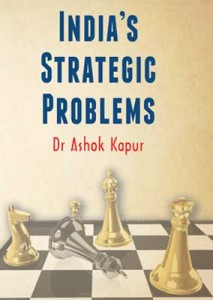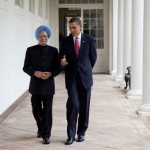As Pakistan is now aiming for a greater South Asian Association for Regional Cooperation (SAARC) with China and the Central Asian states in its fold, the importance of the emerging Bangladesh-Bhutan-India-Nepal (BBIN) grouping has become more important for not only Indian diplomatic initiatives but for economic progress of landlocked countries like Nepal and Bhutan. It is better to admit that not much thought was given behind the conceptualization of the SAARC in the mid 1980s and sub-regional initiatives like the BBIN may work as an antidote to much of the maladies that afflict South Asia now.
The core tenor of the BBIN is mainly economic in character but for making it a success India, the largest power in the grouping, will have to iron out much of the security and strategic balance related tensions that still exist between it and the three other countries. With Bhutan it has a lingering tension over the Druk kingdom’s continuing boundary negotiations with China. The Madhesi issue and Kathmandu’s growing relations with Beijing have generated enough mistrust between India and Nepal. Finally a new tension is likely to grow in Indo-Bangladesh relations as Hasina Wazed, the prime minister of Bangladesh, has announced during the Chinese President Xi Jinping’s visit to Dhaka that Bangladesh would now upgrade her relationship with Beijing to the level of a strategic partnership.
But the BBIN has several tantalizing prospects for all the four nations involved. It has four principal goals: trade, connectivity, transit among the four nations; power generation and investments for water management; mutual trade in energy and power and conversion of national power grids to sub regional power grids; and finally people to people contacts. This sub-region has 190 billion cubic metres (CBM) of natural gas, 900 million tons of coal, hydro electric potential of more than 1,50,000 megawatts, oil reserves of 513 million tons and a 25 percent sub regional forest cover. So mutual cooperation among the nations can lead to substantial social and economic advancement.
Connectivity is the aspect on which great stress is now being laid and in this respect the Motor Vehicle Agreement(MVA) having been signed by the concerned states is an important achievement. It is a public knowledge that Bhutan has some kind of reservations about the MVA as the kingdom attaches more importance to Gross National Happiness than Gross National Product. General consensus in Bhutan is that onrush of numerous motorized transport vehicles in the wake of the MVA will not only tear asunder the serenity of the land, inflict ecological damage but will also tell upon the traditional lifestyle of the people of the tiny mountainous country.
But the BBIN would bring some unexpected windfall for the member nations. Due to the road networks contemplated the distance between India’s northeastern states and the Kolkata port will come down by nearly 1000 km. Nepal and Bhutan would have easier access to not only the Kolkata port but some other deep sea ports like Paradip and Vishakhapatnam on India’s eastern shore. Similarly Ashuganj port of Bangladesh will be opened up to India’s northeastern states. For India access to the Mongla port of Bangladesh will be important for sending commercial cargoes meant for the districts of Barisal and Khulna while Bangladesh will also immensely benefit from the MVA as the entire Indian hinterland and the markets of Bhutan and Nepal will become easily accessible for it.
South Asia can be divided into three sub regions – India-Maldives-Sri Lanka (IMS), India-Pakistan-Afghanistan (IPA) and the BBIN. As, of these three sub-regions economic initiatives are showing most satisfactory results in the BBIN, the Asian Development Bank (ADB) has extended USD 4.7 billion loans to the South Asian Subregional Economic Cooperation(SASEC) countries which include all the BBIN nations. In accordance with ADB’s appraisals ten regional road networks have been proposed for South Asia . Seven of them will be in the BBIN nations.
But there are impediments too. India’s Gross Domestic Product (GDP) amounts to 79 percent of the total regional GDP with Pakistan having 9.73 percent, Bangladesh 6.78 percent, Nepal 0.81 percent and Bhutan 0.08 percent. In order to make the BBIN a success India would have to make an enormous sacrifice as with all the BBIN countries India is enjoying a highly favourable balance of trade.
India’s regional trade pattern is another enigma. The South Asian countries accept 6.6 percent of Indian exports, a very low quantum by any standard. But on the other hand these countries account for only 0.65 percent of Indian imports, a deplorably lower figure. If one goes into more details then it will be seen that exports of Bangladesh, a very vital country for success of the BBIN concept, to India is much lower than those of Vietnam although GDPs of both the countries are almost same.
The MVA under the BBIN holds great prospects for the member nations. It is sure to cut down informal trade, that includes thriving smuggling business leading to great loss of revenues, and boost formal trade. Reduction of tariff, so long tried for improving trade volumes, has not shown encouraging results. The need of the hour is removal of non-tariff barriers, improved connectivity and strengthening of intra sub-regional institutions.
Courtesy: http://southasiamonitor.org/news/can-bbin-work-as-antidote-to-failures-of-saarc-/sl/19934





